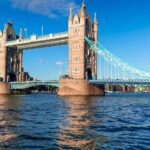Common Sources of Errors in Structural Design
The structural design is an essential aspect of the construction process because it determines the structure’s safety, stability, and durability. Nonetheless, errors can occur during the design phase, which can have significant effects on the structure’s safety and performance.
Here are some common structural design error causes:
Inaccurate Calculations: Inaccurate calculations are one of the most common causes of errors in structural design. This can happen if the designer fails to account for all relevant factors, such as the burden capacity, environmental conditions, or structural materials. This can cause the structure to become overloaded, resulting to structural failure or collapse.
Misinterpretation of Codes and Standards: Designers must adhere to various codes and standards to ensure the structure’s safety and compliance with regulations. However, incorrect interpretation of these codes and standards can result in design flaws. Using obsolete codes or disregarding local regulations, for instance, can result in unsafe, noncompliant structures.
Lack of communication:Design errors may result from a lack of communication between designers, engineers, and other stakeholders. For instance, failure to communicate changes or updates to the design can lead to inconsistencies or conflicts in the design, resulting in structural problems.
Design assumptions:Designers frequently make assertions based on previous designs or previous experiences. However, these assumptions may not always be correct, resulting in design flaws. Assuming, for instance, that a material will behave similarly to how it did in previous designs, even if the design conditions have changed, can result in structural failures.
Inadequate testing: This is a crucial component of structural design to ensure that the structure is safe and fulfils the design specifications. However, inadequate testing can result in design flaws. Failure to evaluate a structure under all potential load scenarios, for instance, can result in structural failure under unexpected conditions.
Material Selection: The selection of appropriate materials is crucial for the structure’s safety and longevity. However, mistakes can occur when selecting materials that do not meet the design specifications. For instance, choosing a material that is insufficiently robust to sustain the load can result in structural failure.
In conclusion, structural design errors can be caused by inaccurate calculations, misinterpretation of codes and standards, lack of communication, design assumptions, inadequate testing, and material selection. To ensure the structure is safe, stable, and compliant with regulations, it is necessary to identify and correct these errors during the design phase.
Disclaimer: This content is provided solely for your review. Erusu Consultants takes no liability for this article. The reader is advised to form their own opinion. Please consult a structural engineer before making any final decisions.






